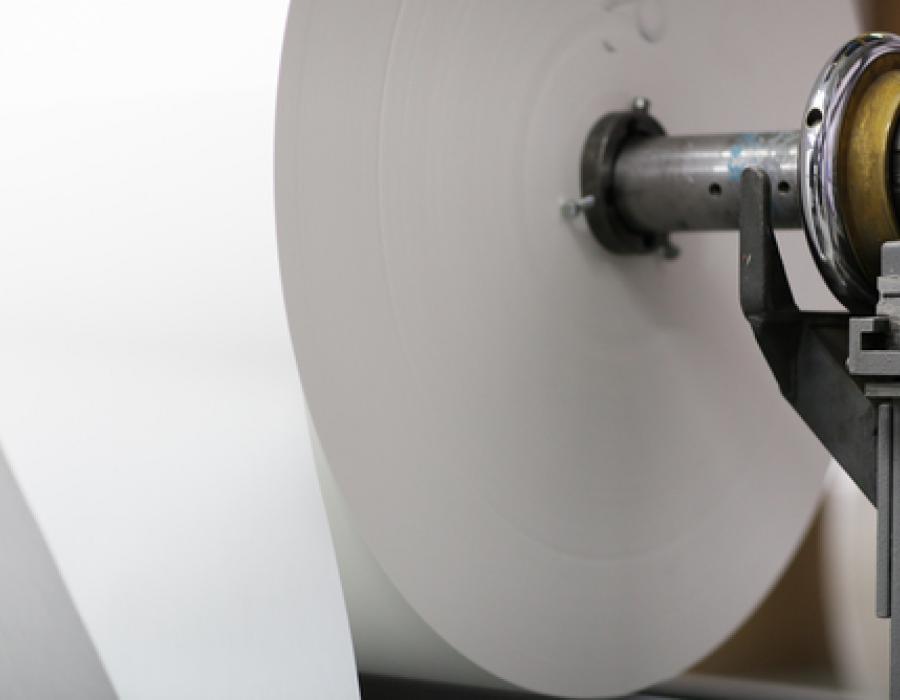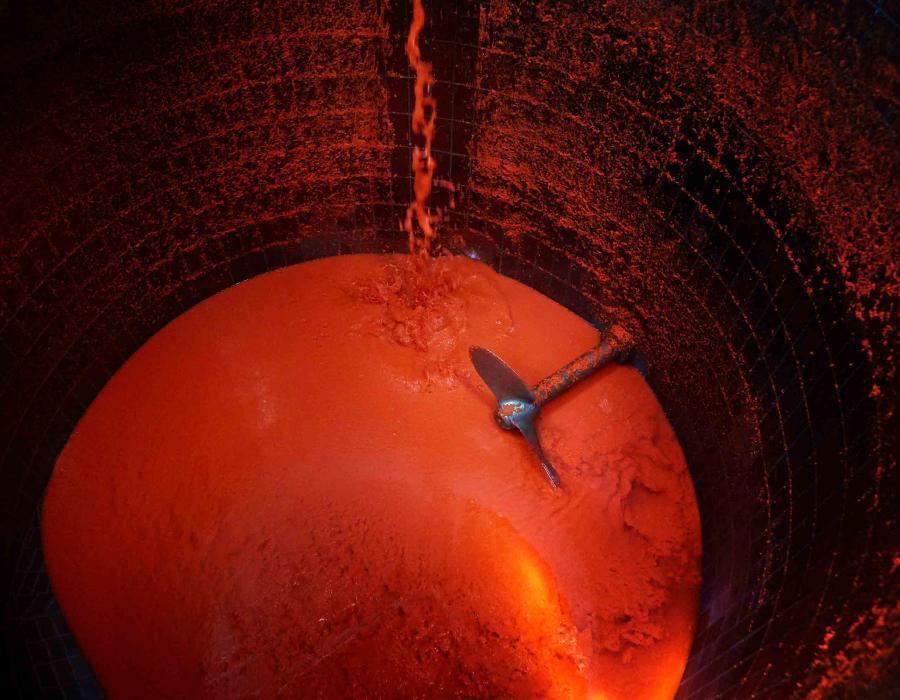A bright colour that will withstand the passing of time is one of the requirements that any paper must fulfil to create a visual impact on consumers and achieve unique and lasting results. The industrial production process (which involves several phases: formation, drying,finishing and qualiti control) imparts the desired hue upon this material, although there is no one way of doing this.
As we have already explained, the manufacture of paper begins by wetting the virgin fibres and mixing them with fillers to guarantee their cohesion and enhance their printability. Up until this point, the future material will be white, and it is at this point when the colour has to be added and a decision taken on how to do so. There are two different ways of applying pigments to paper, and they do not deliver the same results.

Surface application
The first type consists of a surface treatment once the paper has been produced. In other words, the material is manufactured white, and when it is dry a colour treatment is applied to the surface in a separate process. In this case, the colour may look brighter because it is applied to a layer on the outside of the paper, although it can easily lose this brightness when it comes into very direct contact with external agents. This means that resistance to light and humidity, as well as to the mechanical properties which the surface-applied colour has to bear, is therefore reduced.
This system has other shortcomings, the main one being that the papers are exposed to scratching, knocks and friction. Substrates with this type of pigmentation are avoided in quality products, since the background is very apparent and both product and brand image are compromised.
Mass pigmentation
On the other hand, there is another way of applying pigments to paper: through mass pigmentation. Once they have entered the industrial process, the fibres are separated from the Hollander beater, where the base pulp is homogenised. The resulting mass is transferred to a second beater, where the colour prepared separately with pigments is added until the desired hue is achieved. Sometimes a single pigment will suffice; however, in less primary colours, several pigments must be added to the combination until the outcome is as desired.

These pigments that are added to the paper in mass pigmentation are anionic colourants that bind to the celluloid’s fibres chemically by means of Van der Waals forces. To this end, they are added by pumps that regulate brightness as precisely as possible. This “mathematical colour formula” is measured by means of a colorimeter, so that the final result will be as close as possible to the desired hue.
Unlike what we saw in the surface application of colour, mass pigmentation has become a colouring process that delivers homogeneity, ensuring that the entire surface presents an even hue. But not just this factor: the colours’ durability on paper is much greater, as the pigment is part of the base formula. Indeed, for materials intended for objects that need to be folded or opened and closed, this will prevent the colour from flaking from the surface, avoiding patches that denote a poor finish and a negative aesthetic impact.
At the same time, high resistance to discolouration, which may be caused by light and humidity over time, is also guaranteed.
These advantages make it the optimal system for producing quality paper for packaging or publishing projects requiring mechanical resistance that withstand the passing of time and maintain colour brightness. This is why Guarro Casas materials use mass pigmentation in all the ranges manufactured so as to guarantee the finest production results at all times.
